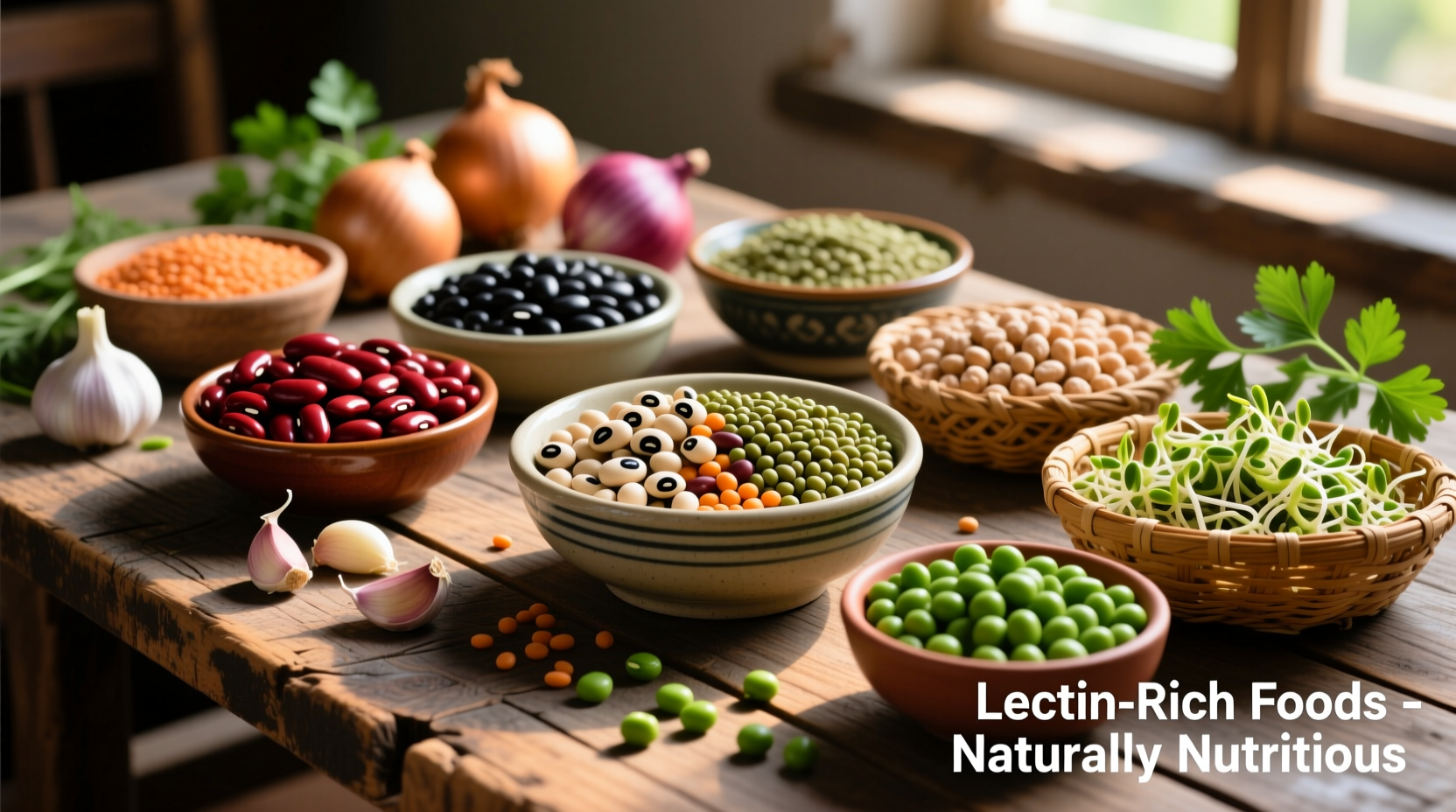Understanding which foods contain lectins is essential for anyone exploring dietary approaches that limit these proteins. While lectins serve important biological functions in plants, some individuals choose to monitor their intake for various health reasons. This comprehensive guide delivers scientifically-backed information about lectin-containing foods, helping you make informed dietary decisions without unnecessary restrictions.
What Exactly Are Lectins and Why Do They Matter?
Lectins are carbohydrate-binding proteins that exist in nearly all plants and animals, but they're particularly concentrated in certain food groups. In plants, they serve as a natural defense mechanism against pests. When consumed, some lectins can interact with your digestive system, though most are neutralized through proper food preparation.
It's important to note that not all lectins affect humans the same way. The lectin content and type varies significantly across different foods, and preparation methods dramatically impact their bioavailability. Rather than eliminating entire food groups, understanding which foods contain higher lectin levels and how to prepare them properly offers a more balanced approach.
Foods Highest in Lectins: The Complete Breakdown
While lectins appear in many foods, certain categories contain significantly higher concentrations. Understanding these patterns helps you make informed choices without unnecessary dietary restrictions.
| Food Category | High-Lectin Examples | Relative Lectin Level | Preparation Impact |
|---|---|---|---|
| Legumes | Kidney beans, soybeans, lentils, peanuts | Very High | Boiling reduces by 99.9%; sprouting reduces significantly |
| Grains | Wheat, barley, rye, quinoa | Moderate to High | Fermentation (sourdough) reduces substantially |
| Nightshade Vegetables | Tomatoes, potatoes, eggplants, peppers | Low to Moderate | Cooking reduces levels; peeling decreases further |
| Dairy Products | Cow's milk, cheese, yogurt | Low | Fermented dairy has lower lectin content |
| Fruits | Berries, apples, citrus | Very Low | Minimal impact from preparation |
This comparative analysis, based on research from the National Institutes of Health, shows how lectin concentrations vary across food groups. The preparation impact column highlights how traditional cooking methods have evolved to naturally reduce lectin content in many staple foods.
How Food Preparation Changes Lectin Content
One of the most important aspects often overlooked in lectin discussions is how preparation methods dramatically alter lectin levels. Traditional culinary practices developed over centuries often incorporate techniques that naturally reduce lectin content:
- Boiling: Kidney beans must be boiled for at least 10 minutes to destroy phytohaemagglutinin, the lectin responsible for potential digestive issues. According to research published in the Journal of Food Science and Technology, proper boiling reduces lectins by up to 99.9%.
- Fermentation: Sourdough bread preparation reduces wheat lectins significantly compared to regular bread. This traditional method has been used for centuries before we understood the science behind it.
- Soaking: Soaking beans overnight before cooking helps reduce lectin content and improves digestibility.
- Peeling and Deseeding: For nightshade vegetables like tomatoes and eggplants, removing skins and seeds where lectins concentrate can further reduce intake.
These preparation techniques represent our culinary ancestors' practical solutions to potential digestive challenges, developed long before modern nutritional science could explain why they worked.

Context Matters: When Lectins Become Relevant
For most people with healthy digestive systems, lectins in properly prepared foods pose no significant health concerns. However, certain contexts make lectin awareness more relevant:
- Digestive sensitivity: Individuals with conditions like irritable bowel syndrome may notice improved symptoms when reducing high-lectin foods
- Autoimmune conditions: Some research suggests potential connections between lectins and autoimmune responses, though evidence remains preliminary
- Raw food diets: Consuming large amounts of raw legumes or grains increases lectin exposure significantly
- Specific dietary approaches: Those following protocols like the lectin-free diet for therapeutic reasons need accurate information
It's crucial to understand that eliminating all lectin-containing foods would mean removing many nutrient-dense options from your diet. The U.S. Food and Drug Administration emphasizes that most people can safely consume lectin-containing foods when properly prepared.
Practical Guidance for Managing Lectin Intake
Rather than eliminating entire food groups, consider these practical, evidence-based approaches:
- Focus on preparation: Always cook legumes thoroughly and consider fermentation for grains
- Vary your diet: Rotate different protein and carbohydrate sources to avoid excessive exposure to any single lectin type
- Listen to your body: Notice how you feel after eating certain foods rather than following blanket restrictions
- Don't fear vegetables: The lectin content in most vegetables is minimal compared to their nutritional benefits
- Consult professionals: Work with a registered dietitian if considering significant dietary changes for health reasons
Remember that many traditional diets around the world feature lectin-containing foods as staples without widespread health issues. The Mediterranean diet, consistently ranked among the healthiest eating patterns, includes moderate amounts of properly prepared legumes and whole grains.
Frequently Asked Questions About Lectin-Containing Foods
Do all beans contain high levels of lectins?
Most beans contain lectins, but levels vary significantly. Kidney beans have the highest concentration of phytohaemagglutinin, while lentils and chickpeas contain lower levels. Proper cooking reduces lectins dramatically in all beans.
Is wheat a significant source of lectins?
Yes, wheat contains wheat germ agglutinin (WGA), a lectin concentrated in the germ. However, traditional preparation methods like sourdough fermentation significantly reduce lectin content. Whole wheat contains more lectins than refined flour.
Can cooking eliminate lectins completely?
Proper cooking significantly reduces but doesn't eliminate all lectins. Boiling kidney beans for 10+ minutes destroys 99.9% of phytohaemagglutinin, while other lectins in different foods may require specific preparation methods for maximum reduction.
Are lectins harmful to everyone?
No, most people digest lectins in properly prepared foods without issues. Problems typically occur only with raw or undercooked high-lectin foods, or in individuals with specific digestive sensitivities. For the general population, lectin-containing foods provide valuable nutrients and fiber.
What are the best low-lectin food alternatives?
Excellent low-lectin options include leafy greens, cruciferous vegetables, most fruits, pasture-raised meats, wild-caught fish, and healthy fats like avocado and olive oil. Sweet potatoes and yams also contain lower lectin levels than white potatoes.











 浙公网安备
33010002000092号
浙公网安备
33010002000092号 浙B2-20120091-4
浙B2-20120091-4